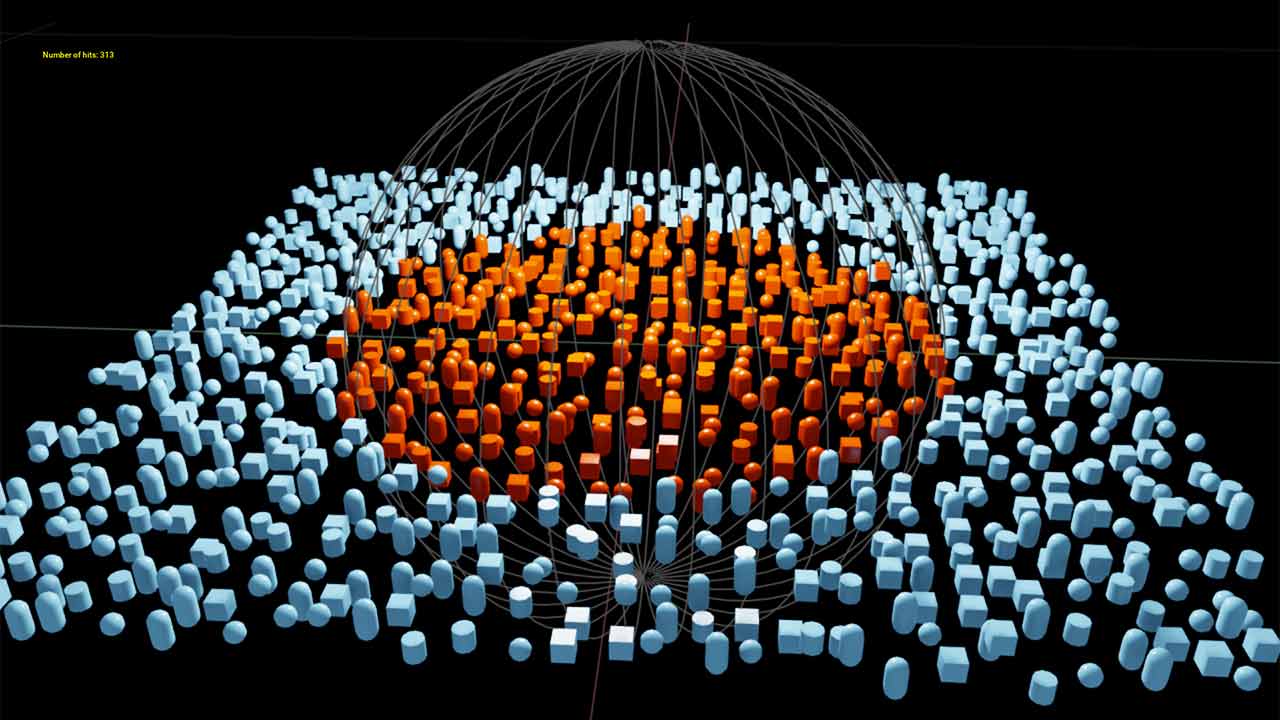NVIDIA PhysX
Modeling digital twins of factories, cities, or entire worlds involves complex simulations that must accurately replicate the physical behavior of objects and systems, which are foundational in building generative physical AI for powering the next generation of autonomous systems.
NVIDIA PhysX® is a scalable, multi-physics SDK for simulating and modeling physics in Robotics, Autonomous Vehicles, and VFX workflows.
Get PhysX in Omniverse
Get PhysX CPU Source on GitHub
Documentation

PhysX based simulation of robots screwing nuts onto bolts, in Omniverse.
Key Benefits of PhysX
Unified
PhysX provides a wide range of new features including FEM soft body simulation, cloth, particles, and fluid simulation with two way coupled interaction under a unified solver framework.
Scalable
PhysX simulations can run on a wide range of platforms, from low-power mobile CPUs to high-end GPUs. This includes a new GPU API designed for end-to-end GPU-based reinforcement learning through Isaac Lab.
Accurate
Through collision detection and the solver, PhysX offers simulation stability for more robust stacking and joints. PhysX also includes momentum conservation for the articulation system and gyroscopic forces in the rigid body system.
PhysX Features
Rigid Body Dynamics
Study the movement of multi-body interactions under external forces, such as gravity. PhysX provides industry-proven scalable rigid body simulation on both CPU and GPU.

Scene Query
Perform spatial queries against the simulated world to permit perception and reasoning in a simulated environment. Combined with flexible filtering mechanisms, PhysX provides support for raycast, overlap, and sweep queries against the entire world or individual bodies.
Joints
Joints constrain the way bodies move relative to one another. PhysX provides a suite of common built-in joint types and supports custom joints through a flexible callback mechanism.
Reduced Coordinate Articulations
Reduced coordinate articulations provide a linear-time, guaranteed joint-error-free simulation of a tree of rigid bodies. PhysX's implementation closely matches analytical models.
Vehicle Dynamics
Study the movement of multi-body interactions under external forces, such as gravity. PhysX provides industry-proven scalable rigid body simulation on both CPU and GPU.
Character Controllers
PhysX provides a kinematic character controller that permits an avatar to navigate a simulated world. It supports rich interactions with both static and dynamically simulated bodies.
Soft Body Dynamics
Finite Element Method (FEM) soft bodies simulate measurable properties of hyperelastic materials to form an accurate and efficient model of elastic deformable bodies.
SDF Colliders
A new Signed Distance Field based collision representation allows PhysX to simulate non-convex shapes like gears and cams without convex decomposition.
Position Based Dynamics
Position Based Dynamics provide a flexible framework for simulating a wide range of phenomena including liquids, granular materials, cloth, rigid bodies, deformable bodies, and more. It is used extensively in the VFX industry.
Custom Geometry
PhysX provides a wide range of built-in geometries and, additionally, provides a flexible callback mechanism to allow the application to introduce their own geometry types into the simulation.
Fracture & Destruction
The NVIDIA PhysX SDK includes Blast, a destruction and fracture library designed for performance, scalability, and flexibility.
Smoke & Fire
Flow enables realistic combustible fluid, smoke, and fire simulations. Flow is part of the PhysX SDK.
PhysX Implementation
CPUs | NVIDIA GPUs | |
|---|---|---|
Character Controllers | ||
Custom Geometries | ||
Fracture and Destruction - PhysX Blast | ||
Joints | ||
PBD (liquid/cloth/inflatable/shape matching) | ||
Reduced Coordinate Articulations | ||
Rigid Body Dynamics | ||
Scene Queries | ||
Smoke and Fire - PhysX Flow | ||
Soft Body Dynamics (Finite Element Method) | ||
Vehicle Dynamics |
See PhysX in Action
PhysX News
Resources
PhysX in NVIDIA Omniverse
PhysX is the primary physics engine of NVIDIA Omniverse™, a platform of APIs and SDKs for building complex 3D and industrial digitalization workflows based on OpenUSD. Isaac Sim and Isaac Lab are two robotics reference applications built on Omniverse, which enable developers to build generative physical AI to power next-generation robots.